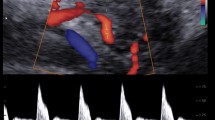Abstract
Objectives
To study the incidence of major neurodevelopmental disability (NDD) at 1 y age (corrected for prematurity) in a cohort of preterm Indian babies (≤33 wk) and to predict NDD based on perinatal risk factors.
Methods
This prospective cohort study was conducted at a referral neonatal intensive care unit (NICU) with a developmental follow up clinic in private sector in Kerala, India. The study was conducted for 4.5 y — January 2005 to July 2009. All preterm babies ≤33 wk at birth, discharged from the NICU were included. Pre-defined perinatal and neonatal risk factors known to affect neurodevelopmental outcome were recorded prospectively, in a structured form. Babies were followed to 1 y of age, corrected for prematurity and classified as normal or as having major neurodevelopmental disability (NDD). Major NDD was defined as cerebral palsy or Development Assessment Scale for Indian Infants (DASII) motor /mental score <70 or blindness in one or both eyes or hearing impairment needing hearing aids.
Results
The incidence of major NDD at 1 y age (corrected for prematurity) among the 225 preterm babies was 6.2 %. A clinical score was devised by combining 5 risk factors, gestation ≤28 wk, need for extensive resuscitation at birth, symptomatic hypoglycemia, invasive ventilation for >7 d and abnormal neurosonogram. Scores of 1 to 5 were associated with 4, 6, 10, 25, 100 % risk of major NDD respectively (p < 0.01). The authors could stratify 87.5 % of the babies into low risk (score of 1 or 2) for NDD and 12.5 % into high risk (score 3 or 4 or 5) for major NDD.
Conclusions
Majority of the preterm babies at lower risk of NDD need less intensive follow up, while those at higher risk (12.5 %) should be guided to more frequent structured follow up and early intervention program.

Similar content being viewed by others
References
Lemons JA, Bauer CR, Oh W, et al. Very low birth weight outcomes of the National Institute of Child Health and Human Development Neonatal Research Network, January 1995 through December 1996. NICHD Neonatal Research Network. Pediatrics. 2001;107: E1.
Vincer MJ, Allen AC, Joseph KS, Stinson DA, Sott H, Wood E. Increasing prevalence of cerebral palsy among very preterm infants: a population-based study. Pediatrics. 2006;118:e1621–6.
Chaudhari S, Kulkarni S, Pajnigar F, Pandit AN, Desmukh S. A longitudinal follow up of development of preterm infants. Indian Pediatr. 1991;28:873–80.
Modi M, Saluja S, Kler M, et al. Growth and neuro-developmental outcome of VLBW infants at 1 year corrected age. Indian Pediatr. 2013;50:573–7.
Mukhopadhyay K, Malhi P, Mahajan R, Narang A. Neurodevelopmental and behavioral outcome of very low birth weight babies at corrected age of 2 years. Indian J Pediatr. 2010;77:963–7.
Wang JC, Mc Glynn EA, Brook RH, et al. Quality-of-care indicators for the neurodevelopmental follow-up of very low birth weight children: results of an expert panel process. Pediatrics. 2006;117:2080–92.
Phatak P. Developmental Assessment Scales for Indian Infants (DASII) (Revised Baroda Norms, 1997): manual. Pune: Anand Agencies; 1997.
Fowlie PW, Tarnow-Mordi WO, Gould CR, Strang D. Predicting outcome in very low birthweight infants using an objective measure of illness severity and cranial ultrasound scanning. Arch Dis Child Fetal Neonatal Ed. 1998;78:F175–8.
Lefebvre F, Grgoire M-C, Dubois J, Glorieux J. Nursery neurobiologic risk score and outcome at 18 months. Acta Paediatr. 1998;87:751–7.
Scheiner AP, Sexton ME. Prediction of developmental outcome using a perinatal risk inventory. Pediatrics. 1991;88:1135–43.
Zaramella P, Freato F, Milan A, Grisafi D, Vianello A, Chiandetti L. Comparison between the perinatal risk inventory and the nursery neurobiological risk score for predicting development in high-risk newborn infants. Early Hum Dev. 2008;84:311–7.
Acknowledgements
The authors would like to acknowledge assistance of Developmental Therapists, Ms Smitha and Ms Kavitha and staff and doctors of NICU, KIMS. They also thank babies and their parents for participating in the study.
Contributions
RS was the principle investigator. NJ prepared the manuscript and managed the babies in NICU.
Author information
Authors and Affiliations
Corresponding author
Ethics declarations
Conflict of Interest
None.
Source of Funding
None.
Rights and permissions
About this article
Cite this article
Sujatha, R., Jain, N. Prediction of Neurodevelopmental Outcome of Preterm Babies Using Risk Stratification Score. Indian J Pediatr 83, 640–644 (2016). https://doi.org/10.1007/s12098-016-2050-1
Received:
Accepted:
Published:
Issue Date:
DOI: https://doi.org/10.1007/s12098-016-2050-1




